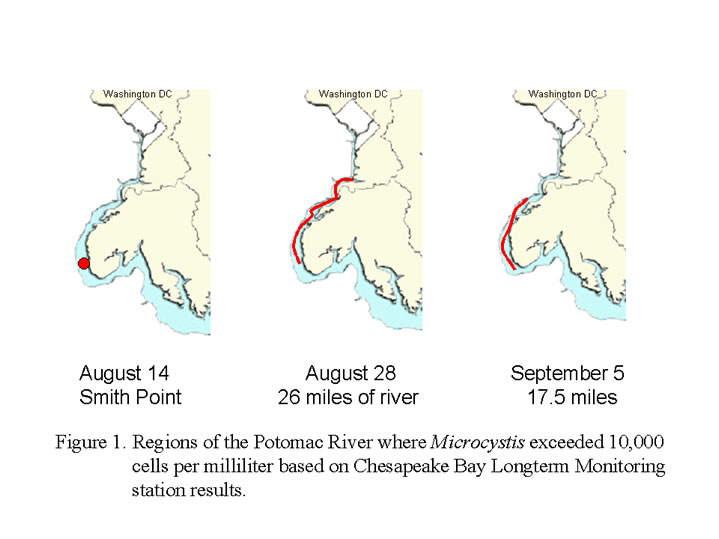|
||||||||||||||||||||||||||||||||||||||||
Maryland Department of Natural Resources monitoring of the Potomac River on September 5th, 2006 at its Chesapeake Bay Long Term Water Quality Monitoring stations showed the cyanobacteria bloom waters have declined in intensity from maximum concentrations of 50,400 cells per milliliter of Microcystis on August 28th at the mouth of Piscataway Creek, to 20,316 cells per milliliter at Indianhead on September 5th (Table 1). The remnants of Tropical Storm Ernesto passed over the Potomac River region on Sept 1st and 2nd with rain, runoff and high winds. Additional storms impacted the region on September 4th and 5th. Sampling results on September 5th showed bloom waters with greater than 10,000 cells per milliliter Microcystis were no longer present between Piscataway Creek and Dogue Creek. The total range of the bloom declined from approximately 26 miles on August 28th to 17.5 miles on September 5th (Figure 1) with only the Indianhead site above 20,000 cells per milliliter (Table 1). The lower boundary of bloom waters moved from Smith Point downriver to Maryland Point.
Table 1. Cyanobacteria cell counts on the Potomac River long-term water quality monitoring stations, August 14th through September 5th, 2006.
Maryland Department of Natural Resources will continue to actively monitor and report on the condition of the river. Citizens are advised to take common precautions around bloom waters to reduce the possible risk of illness or discomfort related to blue-green algal blooms:
|

